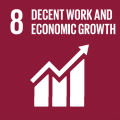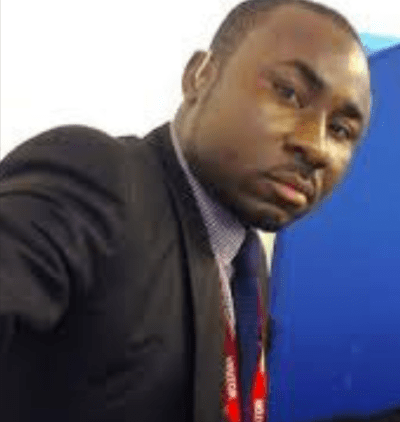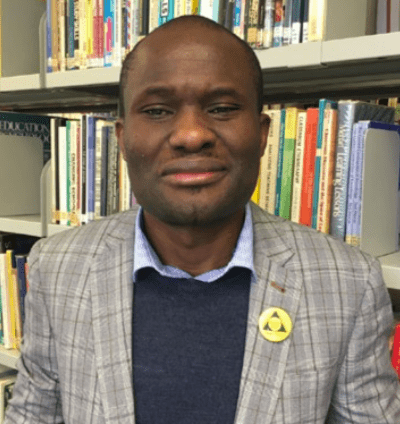Inclusive Education (IE) is a form of education that seeks to remove the access to education barriers which disabled people face and is an integral part of Article 24 of the 2006 Convention on the Rights of Persons with Disabilities (CRPWD). Deaf education seeks to provide educational and support services to deaf students who are enrolled in mainstream classes (which are open to both disabled and non- disabled learners) and special school classes.
Samuel Frimpong shares the findings of his research into deaf education in Ghana over the last 60 years, and highlights key challenges still to overcome
My hearing loss began while I was in upper primary. I had difficulty comprehending lessons, socialising with peers, and faced bullying from children who accused me of pretending to be deaf due to my convincing academic performance. Growing up as a child in Ghana, and suffering from a lack of adjustment support in mainstream schools at the basic (for those from 4 years – 15 years old) and Senior High School (SHS) levels (for those from 15 years to 18 or 19 years old), I encountered a lot of obstacles and frustrating experiences. These experiences, however, did not discourage me from working hard to pursue my goals.
Deaf education in Ghana today
Although there appear to be conflicting reports on the estimated number of deaf people in Ghana, according to The Ghana National Association for the Deaf (GNAD), the figure stands at over 110,000. Currently, there are 18 schools providing education access for deaf students in Ghana. These schools use total communication, composed of sign language, sign-supported English, and spoken speech, as part of their teaching and learning. At the tertiary level, deaf students attend mainstream schools and universities, which provide education for both disabled and non-disabled learners. For deaf students, this includes the provision of sign language interpreting support in class.
Despite the provisions made by the Disability Law 2006 Act 715, the government of Ghana has not done enough to implement key aspects of this law, including the provision of free education for all people with disabilities and the establishment of accessible schools. This has made it difficult for people with disabilities to enrol in existing schools which do not provide the support these learners need. Reasons for the lack of investment in educational services for learners with disabilities include wider negative attitudes towards people with disabilities and a lack of understanding of their needs.
Affordable education is not accessible to deaf children aged 3-5 years in public deaf schools in Ghana. This is because all but one of the thirteen public basic deaf schools are boarding schools and require students to be at least 6 years of age. In a population of 29 million people, there is only one overcrowded and poorly-resourced public SHS for deaf students, and since deaf education started in Ghana in 1957, it has remained the only SHS where all qualifying deaf basic school graduates (after 6 years of primary education, and 3 years of Junior High School) can enrol to prepare for pre-tertiary education.
Through my research, I have identified key challenges facing deaf education advancement, including the lack of funding, inadequate emphasis on research, large class sizes, the absence of feasible legislative policy on deaf education, inadequately skilled sign language interpreters, and political and leadership barriers in the Ghanaian educational system.
Presently, IE for deaf students in Ghana is theoretical, with current practice built around the provision of sign language interpreters for deaf students in mainstream higher education institutions, many of whom are not able to provide adequate support.
Moreover, there is overcrowding, which results in large class sizes. Large class sizes increase the workload of teachers and there is also a lack of qualified teaching assistants to support the teachers. Most deaf schools are dependent on final year university and college students on their teaching practice placements to act as teaching assistant support within their assigned classrooms.
Considering that many deaf students are visual learners, and in the absence of projectors, laptops, and interactive smartboards in classrooms, large classes lead to boredom for some deaf students, which affects their attention and comprehension of lessons. Also, difficulties arise in the planning of small groups or individualised support provision for deaf students with different learning abilities.
With funding challenges posing a barrier to implementing inclusive education in existing schools, there is an argument for the government to consider investing in a new facility for the only SHS for the deaf. While this would not advance IE in Ghana, it would create an environment where a new generation of future deaf leaders can access quality education in the present.
Policy documents and sector performance reports produced by the Ministry of Education (MOE) and Ghana Education Services (GES) on IE are no longer available on the ministry’s website. For any country to achieve IE, all policy documents and strategies must be made available to provide access to those the policies will affect and support. This will encourage greater awareness and understanding of these policies, and support further research to inform decision-making and policy development in future.
Over the past two to three decades, the MOE and GES, and the Ghana National Association of the Deaf, have not conducted and published any further studies into the needs of disabled learners. Most of the inclusive education initiatives have been built around workshops and seminars aimed at creating awareness and seeking stakeholders’ perceptions, most often excluding representatives or members of vulnerable groups. It seems that awareness of the importance of research on vulnerable groups as a basic platform toward planning for the implementation of IE for deaf students in Ghana is not being addressed.
Practical changes need to be made at both the government and policy level to support the implementation of IE in Ghana. This includes the provision of funding to develop and implement inclusive education initiatives, and the publication of all research and policies to support disability and inclusive education advocacy. The above is necessary if Ghana as a country is to plan effectively towards the inclusive education implementation of deaf students.
To read Samuel’s recent publication, ‘Sixty Years of Deaf Education in Ghana (1957 – 2017)’, visit https://bit. ly/32vUgnn
The education of deaf and hard of hearing learners in Zambia is currently provided by a limited and geographically inconsistent spread of special education schools and units at the pre-tertiary level. Since the introduction of the Inclusive Education (IE) policy in 1997, education for the deaf has been provided within mainstream schools. The current Zambian education system is, however, unable to support the growing population of learners who have been identified as having additional hearing needs. This has been worsened by the number of under-qualified teachers who are not fluent enough in sign language to provide effective teaching.
The special units for the deaf and hard of hearing learners are mostly located in urban areas, with most of these centres offering day provision only. As such, many deaf and hard of hearing learners living in the outskirts and rural areas must travel significant distances to attend the units, or simply cannot access them. In such cases, learners must enrol in their local school and often receive instructions without adequate sign language or alternative support.
Reports on the performance of these learners is mixed; while some perform well, many struggles to achieve academic goals. In a regular classroom, non-deaf learners support deaf and hard of hearing learners. Conversely, in ill-equipped special units, deaf and hard of hearing learners are not able to adequately support each other and do not have the support of their non-deaf peers. As such, they often lag behind in information acquisition, which impacts their educational and social experiences, and intellectual growth. This deficit has contributed to below-par academic performance in several disciplines or subject areas, alongside an increased risk of antisocial behaviour. In many instances, individuals with a hearing disability risk greater disadvantage when working with others in the workplace and experience more difficulties in securing and maintaining employment.
Evans Lwimba shares an insight into the difficulties and challenges faced by deaf and hard of hearing learners in Zambia, and how his MSc Inclusive Education at the University of Bristol is helping him define his teaching approach to support diverse learners in his home country.
Safe learning spaces
Building an inclusive society is about recognising diversity in an individual and IE is not an expensive approach. The perceived expense is often used as a reason not to make changes to the education system and encourages reluctance among those who do not understand the benefits of IE.
IE requires the creation of an enabling, conducive and safe learning space through the application of the ‘social model of disability’. This model looks at the society or environment and how it may be hindering an individual’s learning experience rather than treating the person’s disability as the obstacle. For example, if a deaf or hard of hearing learner is being taught in an environment without sign language, it is the environment that is restricting their learning, not the disability.
IE is not a one-lane road where learners with special educational needs are included in mainstream classes, but a dual carriageway, that involves reverse inclusion, where learners without special educational needs are taught together with learners with disabilities in special schools or units. This is the approach taken at the renowned Mambilima Special School in Mwense District, Zambia, which has contributed to an improvement in the social skills and academic performance of learners – those with learning needs and disabilities across a diverse range, and those without.
 Influence on a large scale
Influence on a large scale
As an executive committee member of the Special Education Association of Zambia (SEAZ), and as a provincial chairperson for Zambia National Association of the Deaf (ZNAD), I hope to influence the government of Zambia to implement policies on special and inclusive education on a large scale, in collaboration with a wide range of stakeholders. I also aim to work with the University of Zambia and the Zambia Institute of Special Education to shift their training focus from only offering special education to inclusive education or a combination of both.
I am confident my research and studies will contribute to the finding of the lasting mechanism of mainstreaming, supporting, and educating learners with special educational needs in mainstream classrooms in Zambia. If I can succeed in an inclusive education system with my hearing impairment, others with learning disabilities can and should also excel in the same situation.
Did you know?
- The CSC is committed to supporting talented individuals who have the potential to make change and encourages applications from a diverse range of candidates.
- We work with Disabled People’s Organisations including Leonard Cheshire International, the Commonwealth Disabled People’s Forum, the Pacific Disability Forum and Disability Rights UK to ensure that our policies, procedures and on-award provision supports candidates and Scholars with disabilities.
- Our partnerships with universities across the UK ensure that our Scholars with disabilities have all their academic needs met during their stay in the UK.
- We offer additional financial support to Scholars with disabilities according to their individual needs and provide reasonable adjustments for all CSC events in the UK and abroad.






